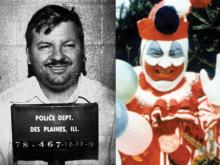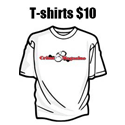
Known as one of the greatest madmen in history, Adolf Hitler was one of life's pathetic losers - a school dunce, a failed artist, a sexual impotent, a sociopathic racist and a drug addict suffering from both manic depression and Parkinsson's disease. But was he also a pedophile? Hitler had “sexual contact” with only a handful of women throughout his life. Five of the women attempted suicide and four of them succeeded.
During the WW II, American psychiatrists labeled him a “schizophrenic” and “psychopath”. Winston Churchill wanted to borrow an electric chair so he could be “executed like a common criminal” in Britain.
But what is the truth about the man behind the dictator's mask?
Adolf Hitler the School Dunce
If we go by Hitler's school results then there is no doubt he had a below average IQ. Hitler was only interested in two subjects – Art (because there were no end of year exams) and History (because he enjoyed learning about Germany's glorious past).
By the time he started secondary school, he was already displaying “sociopathic” tendencies. The boys in his own year rejected him – calling him an “oddball” and “loser” - so Hitler befriended the boys in the lower classes. He would organize, manipulate and bully them into re-enacting historic German battles.
Hitler's father Alois, a respectable civil servant, was very disappointed in his son and pressured him to do better but he died when the budding dictator was only 13.
Two years later, the school principal wrote to Hitler's mother, Klara to tell her that Adolf would have to repeat the academic year because he had failed most of his exams.
According to Donald Hook's The Madmen of History, when Hitler's mother handed him the letter, young Adolf went to the toilet, defecated, used the letter to wipe his bottom, put the letter back in the envelope and re-addressed it back to the school.
Adolf Hitler the Work Shy Bum and Failed Artist
Hitler left school the same year (1905) just before his 16th birthday without any qualifications. He spent the next two years at home painting pictures, working at menial jobs and generally being molly-coddled by his mother. On his 18th birthday, he inherited his father's civil service pension which made him temporarily wealthy.
Hitler was happy to live off his father's pension until the money ran out. For two years, he lived the high life in Vienna, writing letters home to his mother about how “he was making his way in the world as a successful college student and a burgeoning artist”. The truth was that Vienna’s Academy of Art had rejected Hitler's college applications – twice.
Hitler bummed around the city, changing addresses frequently, trying to befriend other artists. When his father's money ran out, he accepted the kindness of strangers and occasional charity handouts. For several years, Hitler worked at one dead end job after another. He was a complete failure.
The outbreak of WW I saved him. It gave him something to do; it offered him a meager salary and it provided him with an opportunity to prove that he could succeed at something.
Hitler was indeed decorated during WW I. His superiors appreciated his bravery but lower ranked soldiers said they were “suspicious of him” and called him “the oddball” which meant he never rose above the rank of corporal.
Hitler and Henry Ford
After WW I, Hitler was imprisoned for treason against the German state in 1924 for plotting to overthrow the Weimar Republic. In jail, he read as many books as he could – mainly German history and political philosophy and later described this time as “free education at the state's expense.” The school dunce had come of age.
One writer who influenced him was American car manufacturer Henry Ford. Hitler read Ford's autobiography, My Life and Work and another of his books The International Jew which claimed a Jewish conspiracy would attempt to take over the world. He also approved of Ford's hostile views towards communism and trade unions.
Much of Hitler's dreary book Mein Kampf (My Struggle), written while in prison, is based on Ford’s ideas. Hitler copies much of Ford's outlook on industry and work. He also takes up his antagonism towards the Jewish people. In effect, Hitler's vision for a “new Germany” is merely a rehash of Henry Ford’s narrow (and some might say twisted) world view.
Hitler the Sexual Impotent
Hitler suffered “serious lower abdominal injuries” during WW I and the injuries obliged him to seek medical attention for stomach cramps and diarrhea for the rest of his life. Experts agree they may have rendered him sexually impotent and could account for his strange relationships with women.
Hitler always said he never married because he was “married to Germany” and never had children because “German citizens were the only children he required.” But was he hiding the terrible truth – that a portion of his sexual organs were blown to smithereens during WW I?
In the film of his final days, Downfall (2004) it is implied that Hitler's girlfriend Eva Braun was allowed to have sex with other men so long as she was discreet. The film script was based on the war diaries (and book) by Traudl Junge, one of Hitler's secretaries in the Berlin bunker.
Also, according to Nazi architect, Albert Speer's memoirs Inside The Third Reich, Braun never slept in the same bedroom as Hitler. “Eva Braun will prove a great disappointment to historians,” he said. Hitler's valet, Heinz Linge, agreed. “Hitler and Braun had two bedrooms and two bathrooms. Public displays of affection or physical contact were non-existent.”
Hitler – the Pedophile and his Suicidal Women
At least four women committed suicide after having “sexual contact” with Hitler. Another attempted suicide but failed. Hitler was attracted to vulnerable teenage women, even when he had reached his 40s. In fact, by the time he met his first girlfriend, he was already in his late 30s.
According to psychologist Andrea Antczak (who has written extensively on Hitler’s psychological makeup) because he had an abusive childhood – his father Alois beat him daily – and a troubled adolescence, this “greatly affected his moral psychological development.” She further writes that “The negative environment in his adolescence instilled in him: hatred, anger and self-loathing. It is clear he was unable to complete any of the stages of life successfully to allow for a solid foundation for the next phase of life.” Antczak implies that as a “sexual being” Hitler was trapped in adolescence even as a middle-aged man therefore he was naturally attracted to adolescent girls.
Hitler began a relationship with Angela “Geli” Raubal (1908-1931) his half-niece when she was 16-years-old and he was 36. Apparently, Hitler was so possessive of her that he had her followed whenever she was not with him. In 1931, Geli Raubal died from a gunshot wound to the lung in their Munich apartment. She had shot herself with Hitler's pistol after he refused to allow her to go to Vienna to see her friends.
The second suicidal teenager romantically linked with him was schoolgirl Maria Reiter (1911 – 1992) who told her story to Stern magazine in 1959. According to Reiter's account, the 37-year old Hitler became friendly with her in 1927. At the end of their first date, he made a “coarse sexual advance” towards her which she rejected. Hitler declared his love for her but then ignored her for several months, plunging her into a deep depression. In despair, the 16-year-old attempted to hang herself, but her brother-in-law found her and cut her down before she died.
Next on the suicide list was Renate Muller (1906-1937), a German singer and actress. In 1935, Muller had a three-hour “meeting” alone in a Berlin hotel bedroom with Adolf Hitler. Unlike the teenage girls he manipulated, Muller was 29, financially independent and did not believe in Fascism. Apparently, she refused to give up her Jewish lover at Hitler's request and rejected the notion of acting in Nazi propaganda films. Shortly afterward, her career began to fail and she became addicted to morphine. Muller jumped from a Berlin mental hospital window to her death in 1937. German newspapers reported she had died as a result of an epileptic fit.
Hitler's next suicidal woman was Unity Valkyrie Mitford (1914 – 1948), an English aristocrat and Fascist devotee. Mitford first saw him when she attended the infamous Nuremberg Rally in 1933. The following year, aged 19, she left England for Munich “to be near him.” Five years later, when Britain declared war on Germany (September 3, 1939), Mitford went to Munich's English Garden, took a pearl-handled pistol Hitler had given her as a gift and shot herself in the head. Mitford survived the suicide attempt but never recovered from her injuries (as the bullet remained lodged in her skull). She died from meningitis in Scotland in 1948.
Eva Braun (1912 -1945) was Hitler's longtime companion and for two days, his wife. In 1929, Braun (aged 17) first met Hitler (aged 40) in Munich where she worked as a Nazi Party photographer. Braun first attempted suicide in August 1932 by shooting herself in the chest with her father's pistol. Her second attempt occurred in May 1935 when she took an overdose of sleeping pills. A decade later, she committed suicide with Hitler in his Berlin bunker on the day the war in Europe ended.
Hitler the Drug Addict
In 1935, Hitler was suffering from long-term, severe, lower abdominal cramps. His physician Dr Theodor Morell said the cramps were caused by a “complete exhaustion of the intestinal system” and recommended the treatment of vitamins, hormones, phosphorus, and dextrose. These were the drugs administered for male “erectile dysfunction” at that time.
According to his own records, Morell tested dozens of relatively unknown drugs on the dictator including “biologicals” from the intestines of male animals and high doses of amphetamines.
Hitler was constantly ill with stomach pains, headaches, nausea, shivering fits and diarrhea. He was also completely dependent on Morell's constant supply of drugs. Morell’s records show that the Fuhrer was taking up to 82 medications per day – including a primitive form of “Viagra” which was semen extracted from the testicles of bulls. These drugs had to administered intravenously as Hitler had a morbid fear of taking pills.
After WW II, Nazi architect, Albert Speer claimed Hitler's “addiction to amphetamines” was the cause of his “increasingly inflexible decision making” – for example, never allowing German military retreats.
Hitler's Parkinson's Disease
In September 1944, Hitler suffered a heart attack and was forced to spend several days in bed. By this time, he was showing the severest symptoms of Parkinson's disease. As early as 1935, he had developed a tremor in his left arm and leg which could not easily be treated. In an attempt to disguise the problem, he would wring his hands while speaking or clasp them tightly together (either in front or behind his back}.
Early newsreel footage clearly shows the tremors in his hand and his shuffling walk. Several German doctors, including Morell and Ernst-Gunther Schenck, gave a diagnosis of Parkinson's disease. By late 1944, Hitler replaced Morell with a new physician, Dr Karl Brandt, who was constantly on hand to administer pain killers and an endless supply of amphetamines.
Hitler the Manic Depressive
According to Brandt, “the Fuehrer was always tired” and displayed symptoms of what medics now call manic depression. “Hitler rarely got out of bed before 11 am. At noon, he was informed of the latest military developments. After quickly considering the news, he issued his orders to the relevant military personnel. His lunch was then followed by a two-hour afternoon nap.”
When Hitler was asleep, no one was allowed to disturb him even when important events were taking place, such as the Allied landing in Normandy. When he did get out of bed, his secretaries were ordered “not to mention the war” in his presence.
By 1945, his hair had gone white, his body was stooped, and he had difficulty walking. A lack of personal hygiene – one of the many symptoms of manic depression – meant that Hitler's sweat “smelled like rotten meat.” People who had not seen him for months were shocked by his appearance. One Berlin witness said: “Often saliva dribbled from the comers of his mouth, presenting a hideous and pitiful spectacle.”
On April 30, 1945 Hitler committed suicide by swallowing a cyanide capsule. As he bit down on the tablet, he also shot himself in the temple with a hand gun. He wanted to be certain he did not survive. His final epitaph has never been written but it might read as follows: “Adolf Hitler – a sexually impotent, drug-addled pedophile – destroyed Europe and was responsible for the deaths of more than 70 million people.”








